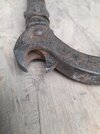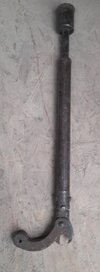As someone who has employed many subbie plumbers in my time my first thought when I see damaged floors is what's there pipework like?
I've always used a circular saw (first one was a skil built like a tank) now 18v dewalt and a multi tool. We used to use a proper nail extractor on cut nails and lost heads ring shanks bit more challenging.
Modern glued floors are a f------- ing pain!
Plus any half decent installer should have torx bits with them plus bits for any other scew type they are likely to find.
I've always used a circular saw (first one was a skil built like a tank) now 18v dewalt and a multi tool. We used to use a proper nail extractor on cut nails and lost heads ring shanks bit more challenging.
Modern glued floors are a f------- ing pain!
Plus any half decent installer should have torx bits with them plus bits for any other scew type they are likely to find.



